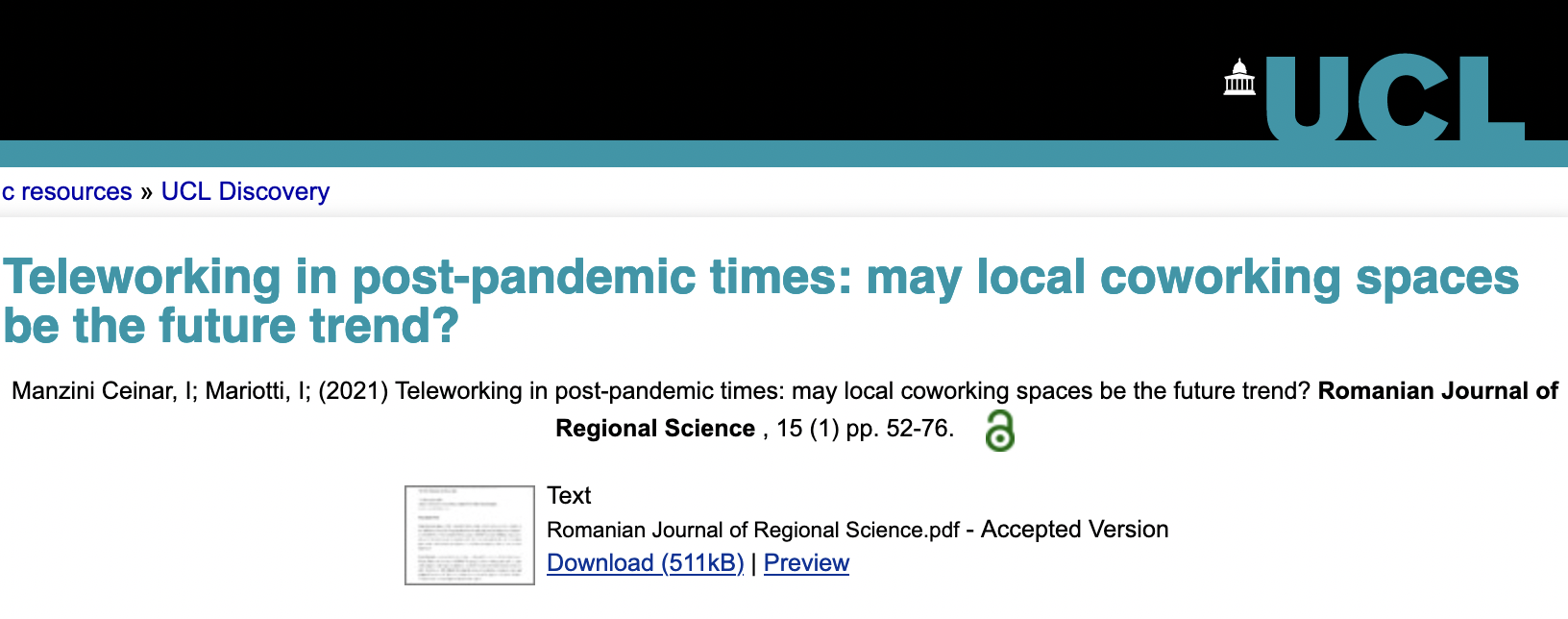di Irene Manzini Ceinar (University College London, UK), Ilaria Mariotti (Politecnico di Milano, Italy)
Abstract
The Covid-19 pandemic has altered the habits and lifestyle of every citizen worldwide who is experiencing social distancing, mainly in the work environment, increasing the degree of uncertainty, especially in creative and innovative sectors. New trends, such as remote working and teleworking, emerged, marking a shift in the working culture, and producing a growth of intermittent work modalities and diverse, even community-led, dynamics affecting our urban environment economically, socially, and spatially.
During the year 2020, we have been witnessed a wave of workers moving from traditional work in the office (Second Place) to teleworking at home (First Place) or a Third place (i.e., coworking spaces), with significant effects on the worker’s performance and the geography of work, including implications for the environment. Even if the turn towards local coworking places was already in place, the impact of Covid-19 on coworking has rendered these local spaces vital pieces of an infrastructure of local resilience as work will shift away from global metropolitan areas, as suggested by numerous analyses based on extensive surveys. Within this context, the present paper aims to explore whether and how teleworking impacts the worker him/herself in terms of productivity, quality of life, and well-being. Moreover, the effects of working in a local coworking space (community-led coworking space) are discussed, and attention is devoted to the role of these workplaces to accommodate teleworkers.

